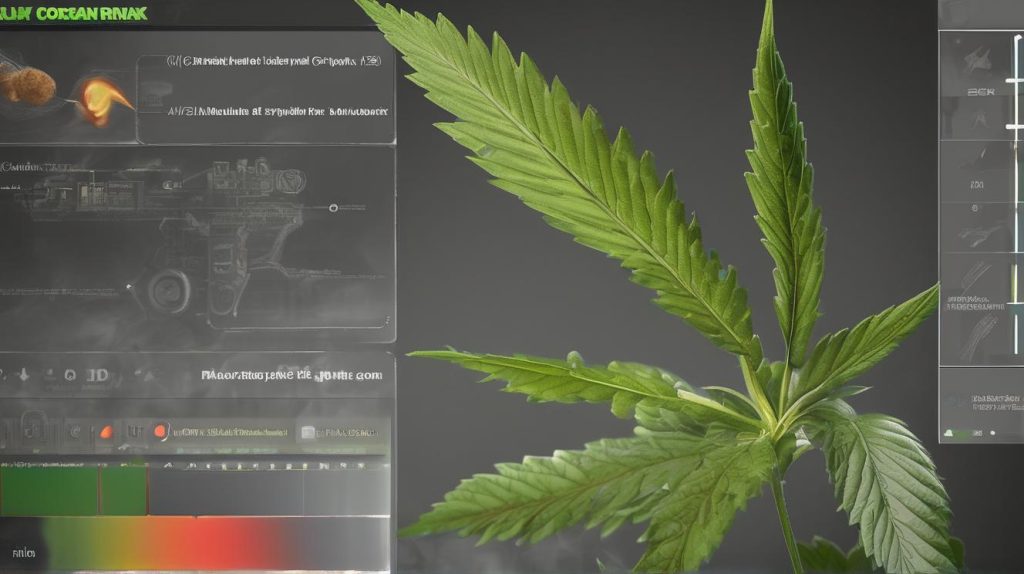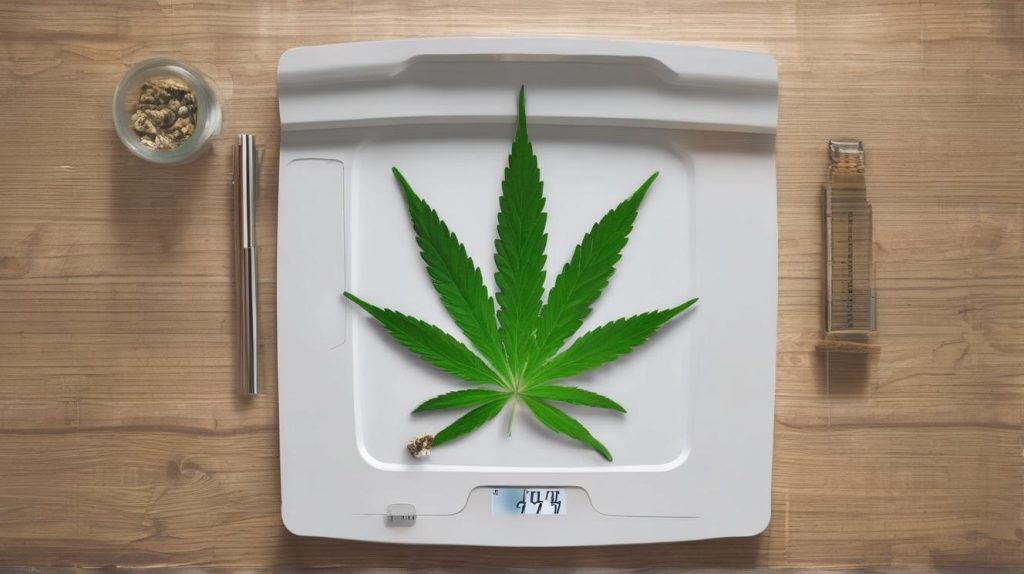
The mysterious world of cannabis cultivation presents many fascinating phenomena, one of which is the emergence of purple weed leaves. This intriguing colour change, often seen in popular purple cannabis strains, has sparked curiosity and speculation among enthusiasts and growers alike. Why do marijuana leaves turn purple? What causes the transformation from the standard green to an enchanting shade of red or purple cannabis? And should you be concerned if you spot purple stems in your cannabis plant? This article will explore the science behind these colour shifts and discuss some of the most popular purple cannabis strains that exhibit these vibrant hues. Whether you’re a seasoned cultivator or a novice, understanding the reasons and implications of purple weed leaves can add a layer of insight to your cannabis growing experience.
Decoding the Primary Reasons for Purple Hues in Cannabis Leaves
The key lies in a naturally occurring pigment known as anthocyanin, commonly found in various plants and responsible for producing red, purple, or blue hues. The presence of anthocyanin in high concentrations can cause the cannabis leaves to take on a distinctively purple shade. However, it’s not just about the pigment. Other factors, such as cold night temperatures and changes in nutrient absorption, can also contribute to this colour change, turning the leaves and stems a deep purple or red hue. Therefore, when you find purple weeds in your garden, it’s a sign of these complex biological processes at play. Understanding these mechanisms can help growers better manage their cannabis cultivation and appreciate the beauty of purple weed leaves.
Purple Weed Leaves – Don’t Judge a Strain by its Color
The world of cannabis is as colourful as it is diverse, with purple weed leaves adding a touch of intrigue to the mix. Enthusiasts and cultivators are often drawn to the striking hues of purple cannabis buds that certain strains exhibit. However, it’s crucial not to judge a strain solely by its colour. The appearance of purple in cannabis, particularly in the leaves and buds, is typically a result of specific environmental conditions and genetic factors, not necessarily an indicator of potency or quality. While purple strains are undeniably attractive and can add variety to your garden or collection, they don’t inherently possess superior attributes to their green counterparts. Understanding this can help you make more informed decisions about which strains to grow or consume and appreciate the beauty of purple weed leaves in a balanced context.
Anthocyanins
Anthocyanins are a group of water-soluble pigments responsible for the red, purple, or blue hues seen in many plants, including some cannabis strains. They play a significant role in developing purple weed leaves and buds. Under certain conditions, such as lower temperatures or changes in pH levels, anthocyanins become more pronounced, leading to the emergence of those enchanting purples in your cannabis plant.
One popular purple strain rich in anthocyanins is Obama Kush. This unique strain offers a stunning visual appeal with its deep purple leaves and buds, setting it apart from many other cannabis varieties. But remember, while the abundance of anthocyanins contributes to its vibrant colour, other factors like genetics, growing conditions, and care practices also play vital roles in its overall quality and effects. So, while it’s easy to get captivated by the aesthetics of popular purple strains like Obama Kush, it’s equally important to consider these other aspects for a holistic understanding and appreciation of these colourful cannabis varieties.
Is Purple Weed Better?
The answer isn’t more complex than one might hope. While the exotic colouration of purple strains adds to their aesthetic appeal, it sometimes doesn’t translate to higher potency or quality. The purple pigmentation is primarily due to anthocyanins, a type of flavonoid that gives many plants their red, blue, or purple hues. Several factors, including genetics, temperature, and pH levels, can influence this colour shift.
However, the colour of your cannabis doesn’t dictate its cannabinoid or terpene profile—elements that play a significant role in the plant’s effects. Therefore, while purple strains are undoubtedly eye-catching, it’s essential to remember that the overall quality of cannabis extends beyond its outward appearance.
The purple hue in some cannabis strains is attributed to anthocyanins, a group of pigments that can show red, blue, or purple colours. Various factors, including genetic makeup, environmental conditions, and nutrient availability, influence the production of these pigments. Interestingly, the stems and trunks of cannabis plants can also turn purple due to excess nitrogen. However, it’s crucial to note that a plant’s colour doesn’t necessarily reflect its quality or potency. It’s the cannabinoid and terpene profiles that determine the effects of a particular strain. Popular purple strains like Granddaddy Purple are appreciated for their unique colour, potent effects, and distinct aroma. Ultimately, while the colouration of cannabis plants adds to their visual appeal, the overall quality extends beyond mere appearance.
Getting to the Bottom of Red and Purple Cannabis Stems
In the fascinating world of cannabis cultivation, the sight of red or purple cannabis stems can be both intriguing and concerning. While these discoloured stems can add aesthetic appeal, especially in purple strains, they can also signal potential issues that need attention. Growers must understand what causes this phenomenon to ensure their plants are healthy and thriving.
Pathogens
Pathogens are one potential cause behind weed leaves turning purple or red. Some infections can disrupt normal plant functions, leading to discolouration. Even popular purple strains like Purple Haze and Purple Kush can be affected. However, not all purple sightings should cause concern. Sometimes, you might find purple weed as a natural result of specific genetic traits. For example, certain strains naturally produce purple cannabis buds as they mature.
Identifying a Female Seed early and maintaining optimal growth conditions can help prevent pathogen attacks. However, if your marijuana leaves turn purple despite your best efforts, it may be time to seek advice from experienced growers or agricultural extension services. Remember, knowledge and timely intervention are essential to successful cannabis cultivation.
In conclusion
The purple colouration in cannabis leaves is primarily due to anthocyanins, a group of pigments that can appear red, purple, or blue. This pigmentation often serves as a protective mechanism for the plant, acting like a sunscreen. However, other factors like nutrient deficiencies, particularly nitrogen, can also cause this colour change. Contrary to some beliefs, stressing or depriving the plant of nutrients will not force this colour change. The purple hue is natural and common in many plants, not just cannabis, indicating a healthy growth process.



